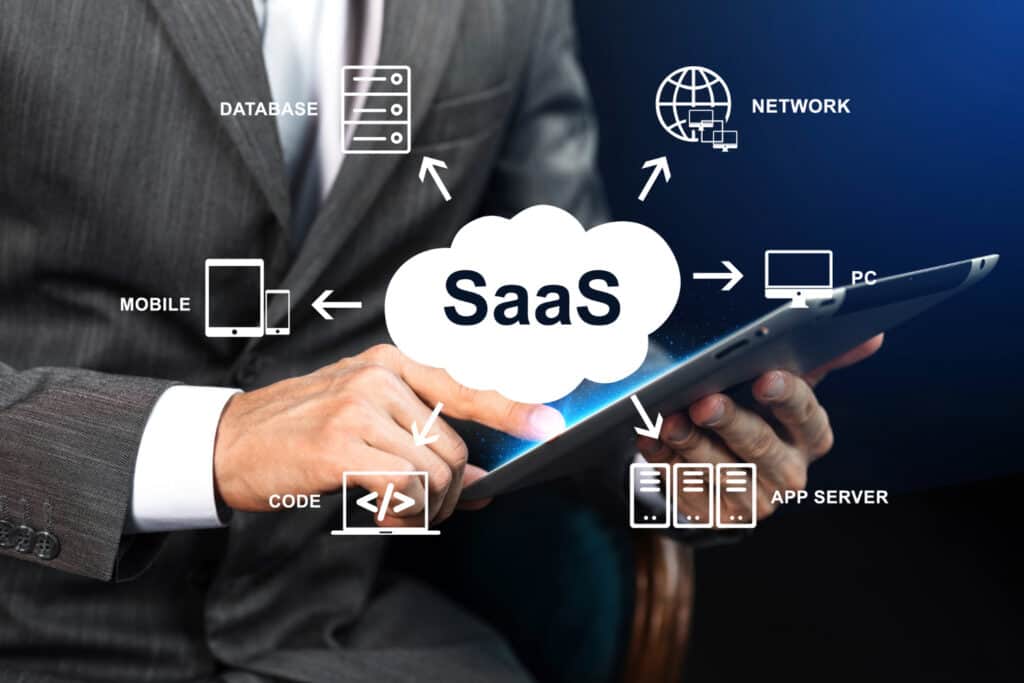
The Importance of a Customer-Centric Business Plan for SaaS Startups
Having a fantastic product idea is not enough to launch a profitable SaaS Startups. It is no longer sufficient to simply construct a platform and hope that users will arrive, as competition is increasing in all software categories. The ability to fully comprehend their clients and centre their entire business on providing value to them is what distinguishes successful software startups.
Planning with the needs of the customer in mind becomes crucial at this point. Long-term growth, the product, and the go-to-market strategy can all be influenced by a business plan that centres on the needs, goals, and pain points of the customer. A customer-focused approach ensures that the startup is aligned with actual demand and user expectations from day one, as opposed to focussing solely on features or financial projections.
Why Customer-Centric Planning Matters in SaaS
Customer experience is the product in a SaaS company, not merely a component of it. Retention becomes more crucial than one-time sales because users often pay on a subscription basis. Users terminate their plans if they are not receiving consistent value. This implies that understanding and continuously satisfying customer needs is the foundation of the entire business strategy.
Conventional business plans often place a strong emphasis on competitive analysis, technology architecture, and market size. These are crucial, but if they don’t relate to what customers truly want, they may fall short. All business operations are in line with user outcomes when a plan is founded on customer-centric planning.
This approach also helps early-stage software startups avoid the common trap of building a feature-rich product that nobody uses. Instead, it encourages founders to validate ideas with real customers and evolve based on feedback, reducing risk and increasing the chances of market fit.

Starting With the Customer Problem
The most important question any SaaS business must answer is: what problem are we solving, and for whom?
Customer-centric planning begins with identifying a clear problem faced by a specific audience. This step involves more than brainstorming internally. It requires talking to potential customers, understanding their workflows, and uncovering the challenges they face in their day-to-day work.
This customer research becomes the foundation for your business plan. It guides product development, pricing, and messaging. It also keeps the team focused on building something that creates real impact, rather than chasing trends or building for personal preference.
Your business plan should clearly state:
- Who your target users are
- What problem they face
- How your solution addresses it better than existing alternatives
- Why now is the right time for this product to succeed
This level of clarity ensures alignment across the team and helps attract investors who care about market relevance.
Building the Product Around Customer Needs
Translating that understanding into product features and user experiences that directly address the customer’s problem comes next. This is where a software startup’s vision comes to life. Prioritising features based on impact rather than just innovation is a hallmark of customer-centric product development. A leaner, more focused product with excellent usability tends to resonate better at launch than one with a long list of features.
Usability testing, user personas, and customer journey mapping are a few tools that can help guarantee that every decision is based on accurate input. If users have trouble with clarity, navigation, or onboarding, those problems should be prioritised over the addition of new features. The product roadmap should also be flexible. By continuing to collect data and feedback post-launch, SaaS teams can evolve quickly and address shifting customer expectations. This adaptability is one of the strengths of customer-centric planning and is particularly valuable in fast-changing markets.
Pricing and Monetization Based on Perceived Value
Pricing is often one of the most challenging parts of any SaaS business plan. It is also an area where customer insights can make a significant difference. Rather than basing pricing on internal cost or competitor benchmarks alone, customer-centric planning encourages startups to consider what the product is worth to the end user. How much time or money does it save? What would it cost the customer to achieve the same result using manual processes or legacy tools?
Surveys, A/B pricing tests, and interviews can help determine what pricing model works best. Whether it is per user, per feature, per transaction, or tiered plans, the structure should reflect how different users derive value. Transparent pricing, clear upgrade paths, and easy cancellation policies are also part of the customer experience. A pricing model that feels fair and flexible can help with conversions and long-term retention.
Sales and Marketing with the Customer in Mind
A software startup must identify the most effective channels to connect with clients, explain advantages, and foster trust. Customer-centric planning involves developing messaging that addresses problems rather than just features. The language, content, and time spent by your target audience should all be taken into consideration when developing marketing strategies. Testimonials, product demonstrations, and case studies can all aid in bridging the gap between interest and dedication.
Customer-centric marketing also highlights value and continuous learning. Ways to help users along the way include webinars, in-app tips, email onboarding, and how-to guides. In addition to lowering attrition, these efforts establish the brand as a long-term collaborator rather than merely a supplier. It is important to teach sales teams to listen first. Instead of pushing the product, a consultative approach that uncovers the customer’s specific needs builds stronger relationships and leads to better deals.
Retention as a Growth Strategy
In the SaaS world, acquiring customers is only half the battle. Keeping them is where long-term success lies. That is why a SaaS business plan must include retention strategies as a key part of growth. Churn reduces revenue and limits your ability to scale. High churn is often a sign that customers are not seeing ongoing value or are struggling with the product. Customer-centric planning addresses this by making customer success a priority.
This includes setting up systems for onboarding, support, and regular check-ins. Monitoring engagement metrics like logins, feature usage, and support tickets can help identify at-risk users early. Feedback loops are another important element. Offering users a chance to share their thoughts through surveys or open-ended feedback creates a sense of involvement. More importantly, it gives the company actionable insights to improve the product and experience.
Happy customers become advocates. Referrals, testimonials, and user-generated content can all contribute to organic growth. In this way, retention is not just about preventing churn, it is a driver of sustainable, customer-powered growth.
Aligning the Whole Team Around the Customer
A customer-focused culture extends beyond the sales and product teams. Every department in a software startup must understand and give priority to customer outcomes if it is to fully adopt this model. This includes marketers using customer stories to inform campaigns, designers creating user-friendly interfaces, and engineers writing code with usability in mind. Teams in charge of operations and finance also gain from understanding how their work affects customer satisfaction.
The team can stay grounded by sharing support stories, acknowledging user accomplishments, and incorporating customer insights into weekly meetings. Startups that prioritise the needs of their customers increase customer loyalty and produce superior solutions. Your business plan should reflect this alignment. Highlight how customer feedback will be collected and used, how teams will collaborate around customer goals, and how success will be measured beyond just revenue.

Measuring Success Through Customer Outcomes
Revenue and growth are important, but customer-centric planning pushes startups to consider additional success metrics. These include:
- Net Promoter Score
- Customer Lifetime Value
- Activation and retention rates
- Time to value
- Support ticket trends
Tracking these indicators helps identify what is working and what needs improvement. It also ensures that short-term tactics do not compromise long-term relationships. Investors and advisors increasingly recognize the value of customer-focused strategies. A business plan that includes these metrics shows that your SaaS business is not just focused on growth but on delivering consistent, measurable value.
Conclusion
Customer satisfaction, trust, and success are the cornerstones of any software startup’s growth trajectory. A customer-focused business plan from the start creates the groundwork for a product that addresses actual issues and creates enduring connections. Startups can align teams, stay flexible in shifting markets, and avoid expensive blunders by using customer-centric planning. Better product design, more intelligent pricing, more effective marketing, and increased retention are also supported.
The businesses with the best technology are not the only ones that succeed in the increasingly crowded SaaS market. They are the ones who understand their users, pay attention to them constantly, and adapt to suit their requirements. A business plan based on that idea is not only wise, but also necessary.
